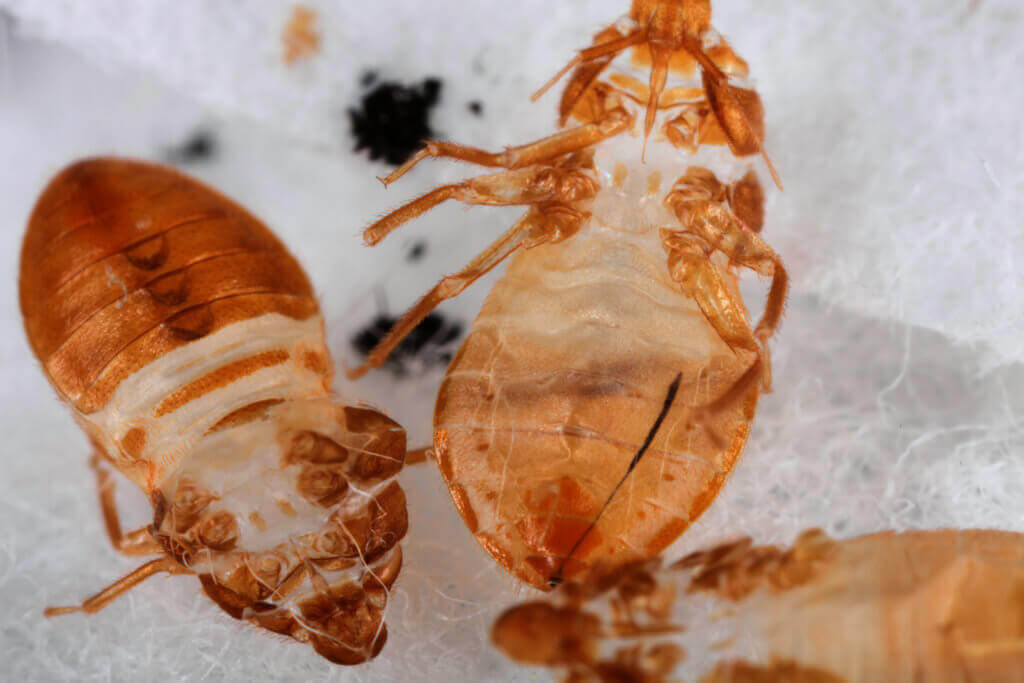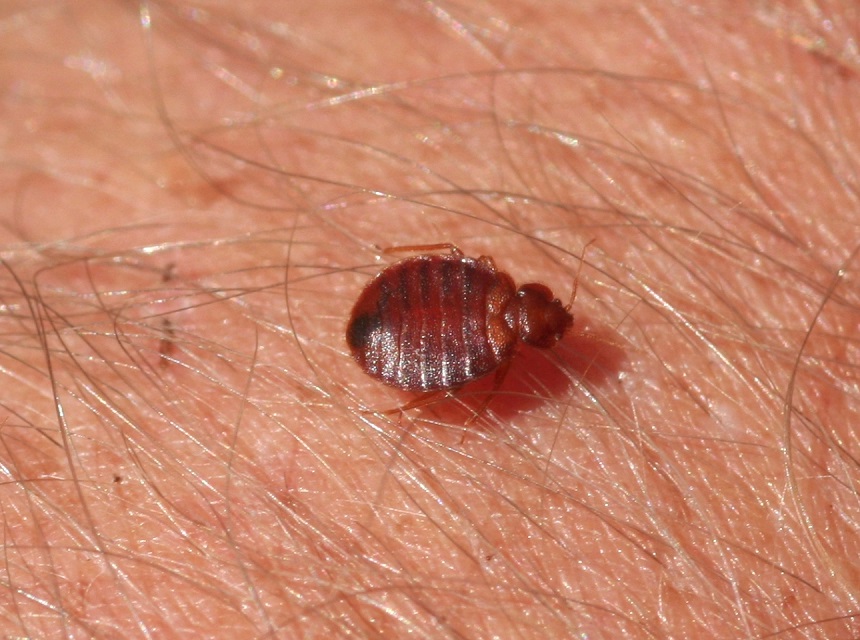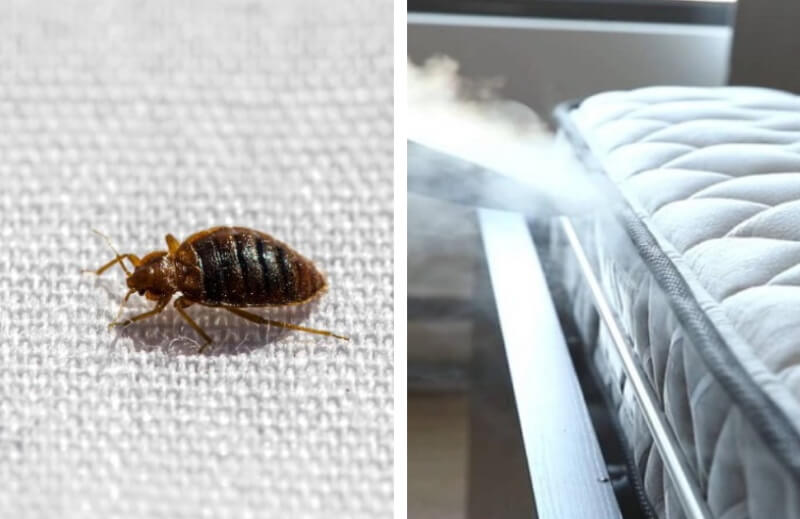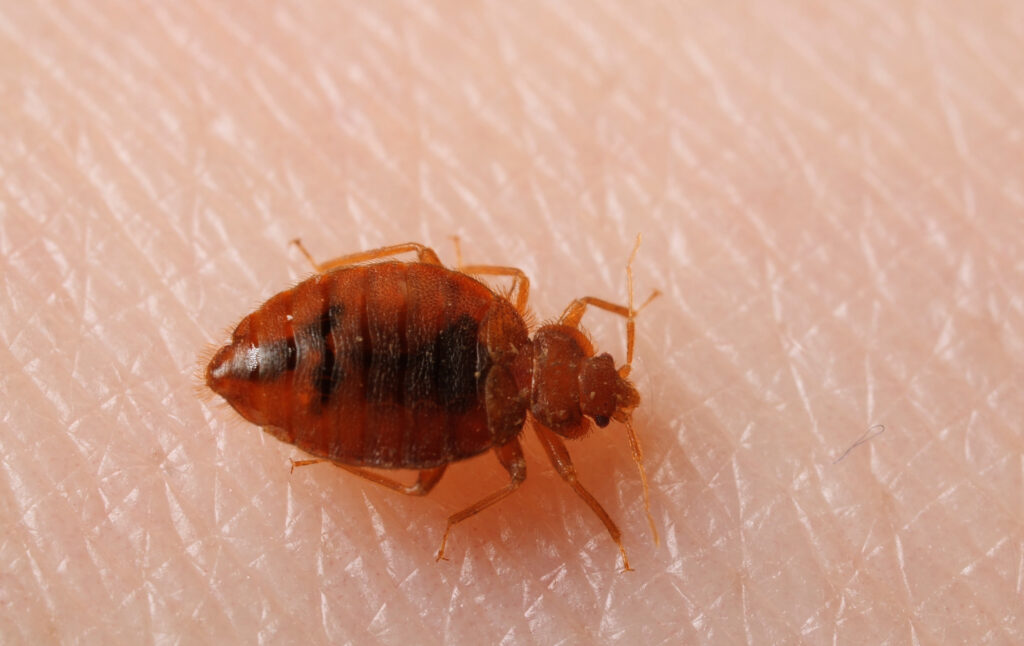

Bed bugs are insects that are around 5–7 millimeters in size Trusted Source Bed Bugs Appearance and Life Cycle | US EPA Identify these bugs accurately, from egg to nymph to adult. Adults are about the size of an apple seed, brown and oval-shaped, and either flat or balloon-like depending on how recently fed. Nymphs are a bit smaller and translucent or whitish yellow. www.epa.gov (which is 0.2 to 0.27 inches). Also, they only come out at night. It is, therefore, possible that you will not notice their presence in your home, and especially in the bedroom. However, there are obvious signs that can alert you to a possible infestation, like bed bug shells.
Bed bugs should be the first culprits you should think of if you find the parts of your backs, legs, arms, and necks suddenly itchy, swollen, with red inflamed area after sitting or lying on furniture. If the real criminals are evasive, you can watch their trails by looking at their common signs – that is, the bed bug shells, casings, eggs, their blood spots after each meal of blood, and many more.
In this article, we’ll help you identify a bedbug infestation by simply checking out for bed bug shells. So, for those asking what bed bug shells look like, here you have it!

Bed bug shells are the hard external coverings of the insects. Since they are insects, the shells are the exoskeletons which are shed periodically until they reach an adult size.
In their development cycle, bed bugs shed their skin. Because their shell is rigid and cannot grow, they must periodically take them off and replace it with a shell that fits properly. After the fifth larval stage, the insects enter their adult stage and will no longer shed as they have reached their possible size.
The shell is beige or can have a dark reddish brown color. Over time, these outer shells accumulate in the bed bugs’ infestation site or hiding place. These include mattress folds, baseboards, or furniture corners.
Bed bugs shed their shells after completing a blood feeding during each stage of their five life cycles. That is, the female adult bed bug feeds before laying each egg, which is the first sign of infestation. These eggs then hatch in about two weeks. They also begin to feed and shed each time.
However, once a bedbug reaches adulthood, it stops shedding. This is because it has stopped growing and shells are shed when the body outgrows the exoskeleton. So, since growth is the only reason bedbugs shed their skin, adults don’t need it.
The moulting skins of bed bug nymphs are small, white, and easily go unnoticed. This is because the nymphs are much smaller than the adults. Bedbugs turn brown as they feed and shed.
When not fed, they are tough enough, and the shell itself is quite stiff. You cannot squish it, for example with a towel, as you would with a bedbug that has just fed. Shells of bed bugs are very tough substances that are widely produced in nature. It is found in the exoskeletons of insects like these, and also larger creatures like crabs. It is perfect as a light armor. If you eat shrimps, their hard shell is made from chitin, which is similar.
 How Large Are They?
How Large Are They?Bed bug egg shells are quite small. They measure around 1 mm (0.4 inches), the same size as their eggs. The egg shells are pale yellows. When you find a fresh egg, it is an indication of a nasty infestation and you have to act fast. A female bed bug during its adulthood can lay between 1 to 7 eggs a day and can lay between 200 to 500 in its lifetime. Hundreds of bugs hatch up from a single egg.
The presence of bedbug eggs should also alert you. They are whitish in color but can be sticky in nature. it is not just whole eggs, look out for empty shells too. Contact a pest control professional immediately if you notice any of these signs. The infestation can already be massive.
Bed bug shells also come from their eggs, like most egg-laying animals. Whichever the case is, bed bug shells do not biodegrade quickly Trusted Source Think you may have bed bugs? One of the easiest ways to know for sure is to check for bed bug skins. Learn how to identify traces of an infestation. www.terminix.com . They stay in place for a long time. The shells, like old fingernails, does not rot if the shell has been left in a low-traffic area and may be several years old.
The most common places you can find bed bug shells are the hiding spots you find bed bugs in. These include:
You’ll know the shells come from bed bugs if they are beige or dark reddish brown in color. Over time, these outer shells can accumulate. You will often find the egg shells in the favorite places of bedbugs
If you have a lynx’s eye, you might see the real bedbugs. These insects resemble apple seeds in adulthood. After a good bloody meal, they become more swollen and are dark brown.
It is quite common to confuse bedbugs with other, equally harmful insects. There are, among others, bat bugs, fleas, and clover mites. But it is the carpet beetle that most resembles a bedbug in terms of its morphology. The difference is that this has small hairs.
Asides from the shells, other signs to watch out for in the case of an infestation are:
Bedbugs feed primarily on human blood. When they bite you, these insects inject a blood to help the blood flow more freely. It is therefore not uncommon for a few droplets of blood to stain your bedding. If when you wake up, you discover mysterious bloodstains on your bed, you might consider a quick inspection.
You might confuse bed bug bites with those of other insects. However, the bites of these bed insects are grouped in threes. They are arranged in a straight line on the exposed parts. Also, the areas of bedbug bites give off a characteristic odor reminiscent of cilantro.
Besides the traces of blood, bedbugs often leave behind fecal stains. These stains are generally rusty in color. They have an unpleasant smell and are messy if you touch them. These traces will not necessarily be limited to the bedding. You can find it on the walls and in particular behind the furniture. On hard surfaces, fecal spots may look more like small black spots.
The parts of the body most affected by bed bug bites are those that are uncovered. In particular we are talking about: face, neck, hands, upper limbs. As far as possible, in advance, it would therefore be advisable to cover these parts. However, this is not always feasible.
To avoid scratching and complicating the symptoms with infections, an immediate treatment after the sting is to rinse with warm water at 122°F. This simple remedy has proven effective in soothing itching and reducing skin damage.
A great way to act is to use heat, which bedbugs can’t stand. With a steam engine, you just need to direct the hot jet on the bedbug bed to kill them all. These literally die when cooked, as they cannot withstand temperatures above 140°F.
Steam is a very effective method, as it allows you to easily reach even difficult corners of the house.
Once the infested area has been treated with steam, you can proceed by vacuuming with a normal electric broom. With clothes that you believe are affected by bedbug, you need to wash them in boiling water, bringing the washing machine temperature above 140°F.
To protect the beds, however, it is advisable to always use mattress covers which can be easily removed and washed at high temperatures.
Other ecological and pesticide-free remedies are traps to be placed in strategic points of the house. These are traps to which bed bugs are attracted, but from which they can no longer get out.
There are also bed bug traps and pheromone traps which are used for luring the insects. These types of traps, do not use pesticides. However, there are also natural pesticides for bed bugs that don’t have harmful substances. One of the best of these types is the EcoRaider 16 oz Bed Bug Killer. it is formulated from natural ingredients which are non-toxic. it is, therefore, child- and pet-friendly.
Meanwhile, if you have an infestation you’re not sure yet what type of bugs are behind them, then it is better to buy an all-round bug killer. One of the most purchased online is the Ortho Home Defense Max. This is a tick, bed bug, and flea killer that kills the bugs in all stages of their life cycle – adults, nymphs, and eggs.
it is relatively easy to tell if you have a bedbug infestation. They leave behind their droppings and moulted skins. Like other parasitic insects, bedbugs must shed. Bedbug exoskeleton sheddings occur because they outgrow their shells. Bed bugs moult as they move through one stage of their life cycle. They may double in size with each step, but the hard bed bug shells do not grow with them. The real bugs are often not easy to find. They only leave behind a trail of itches and resulting infestation. But when you suspect their infestation, it is better to act as soon as possible by ridding them with traps, bed bug repellents or even with the use of steam engines and vacuum.





